


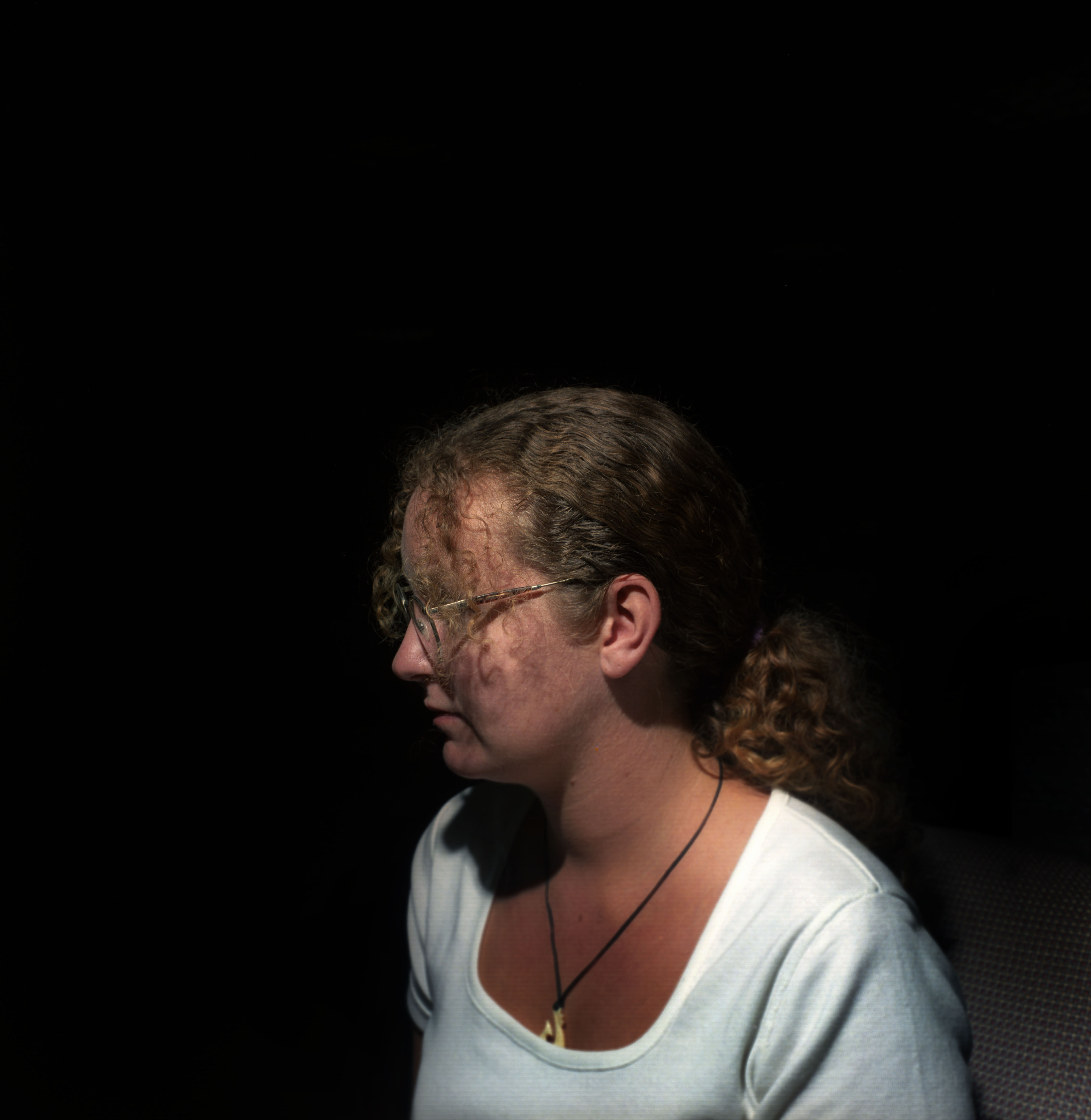


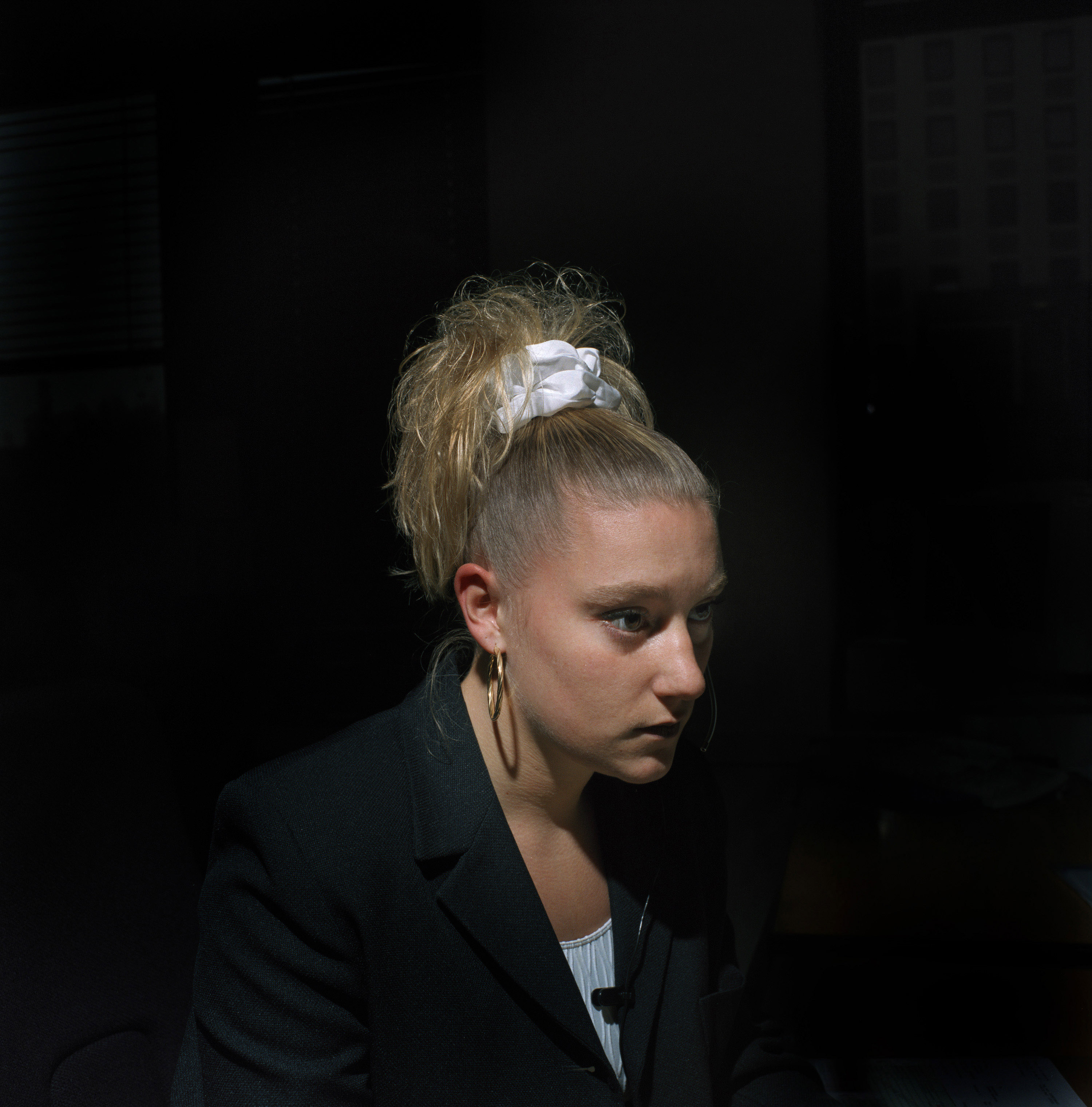
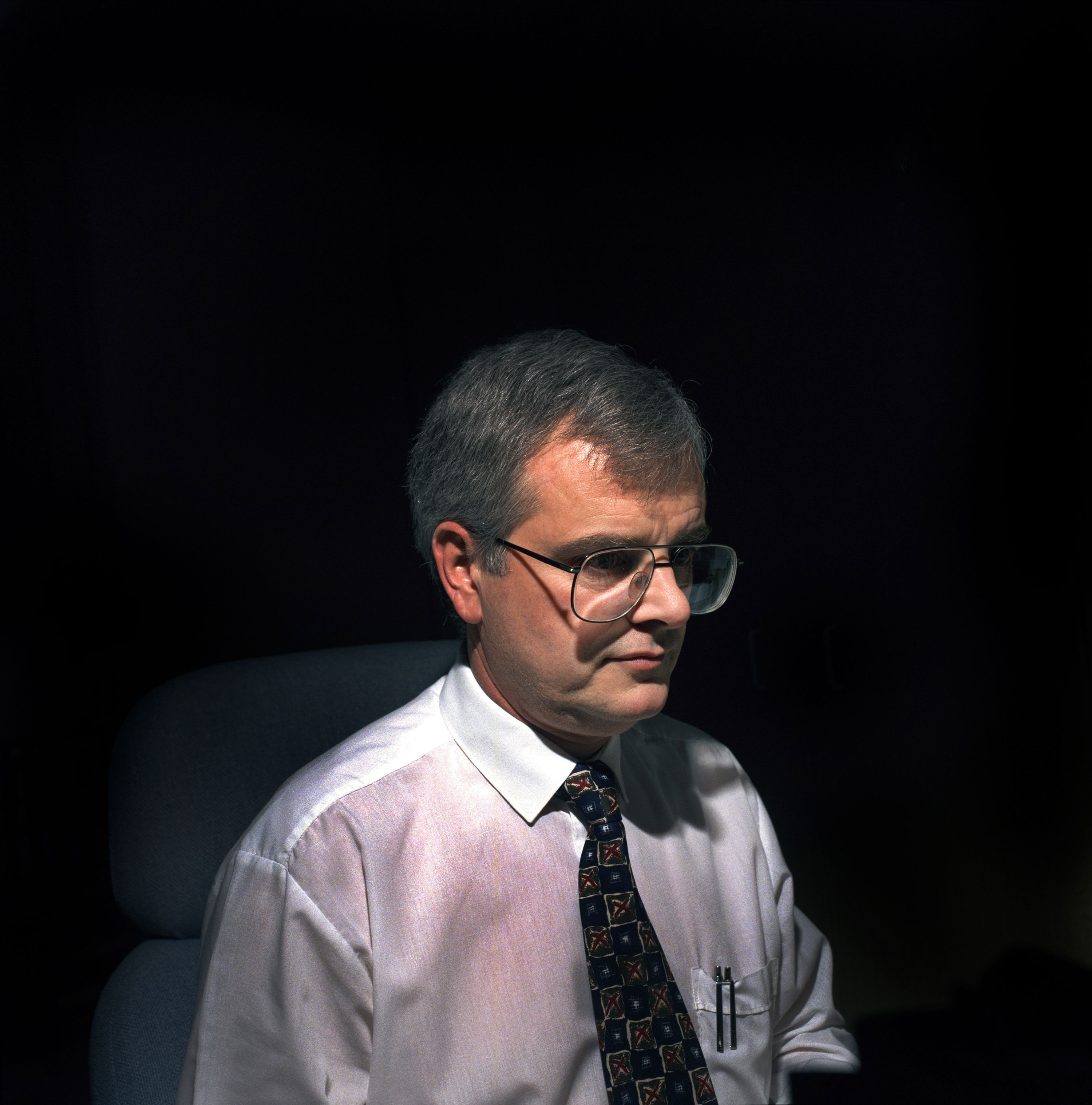
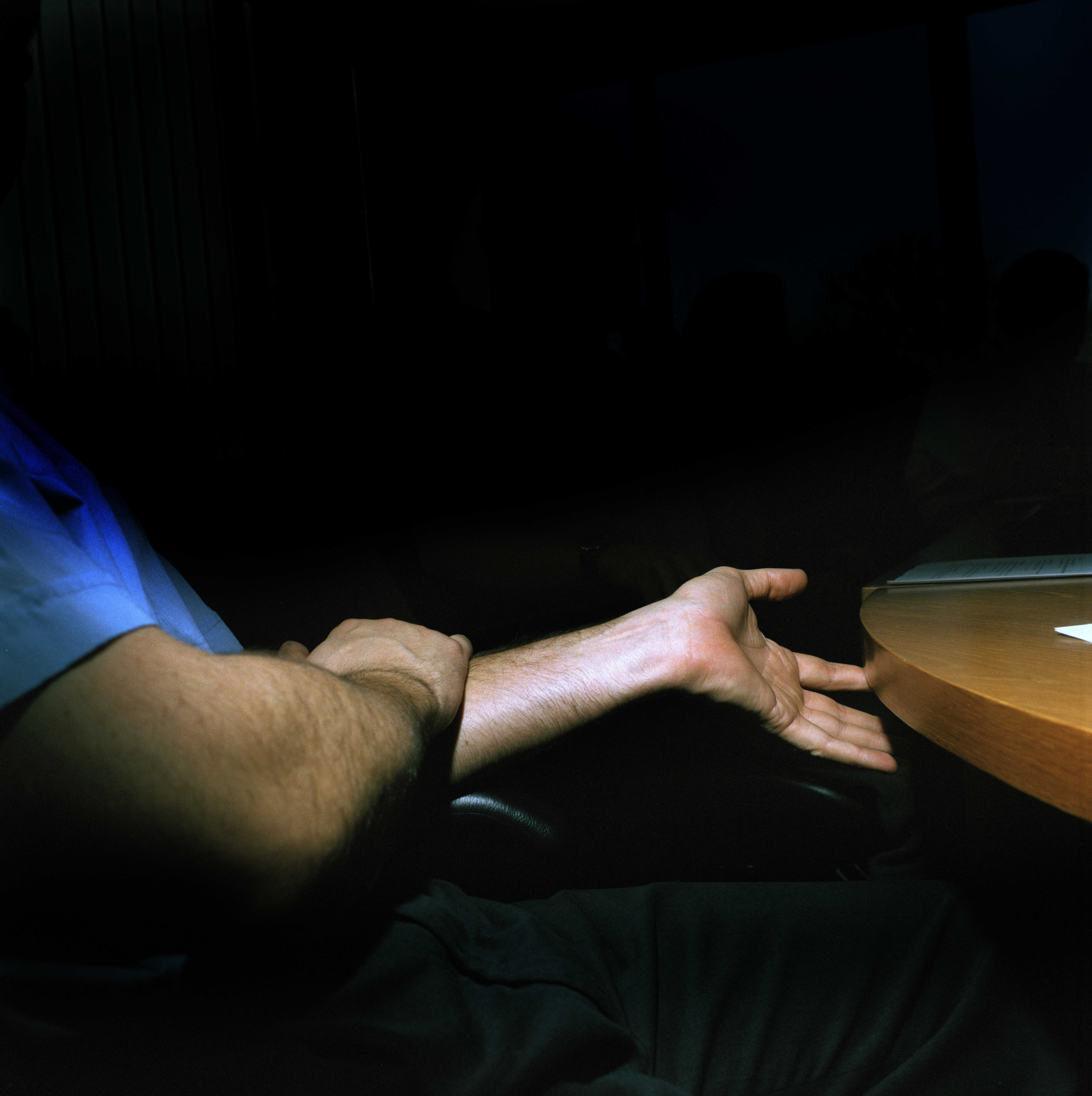
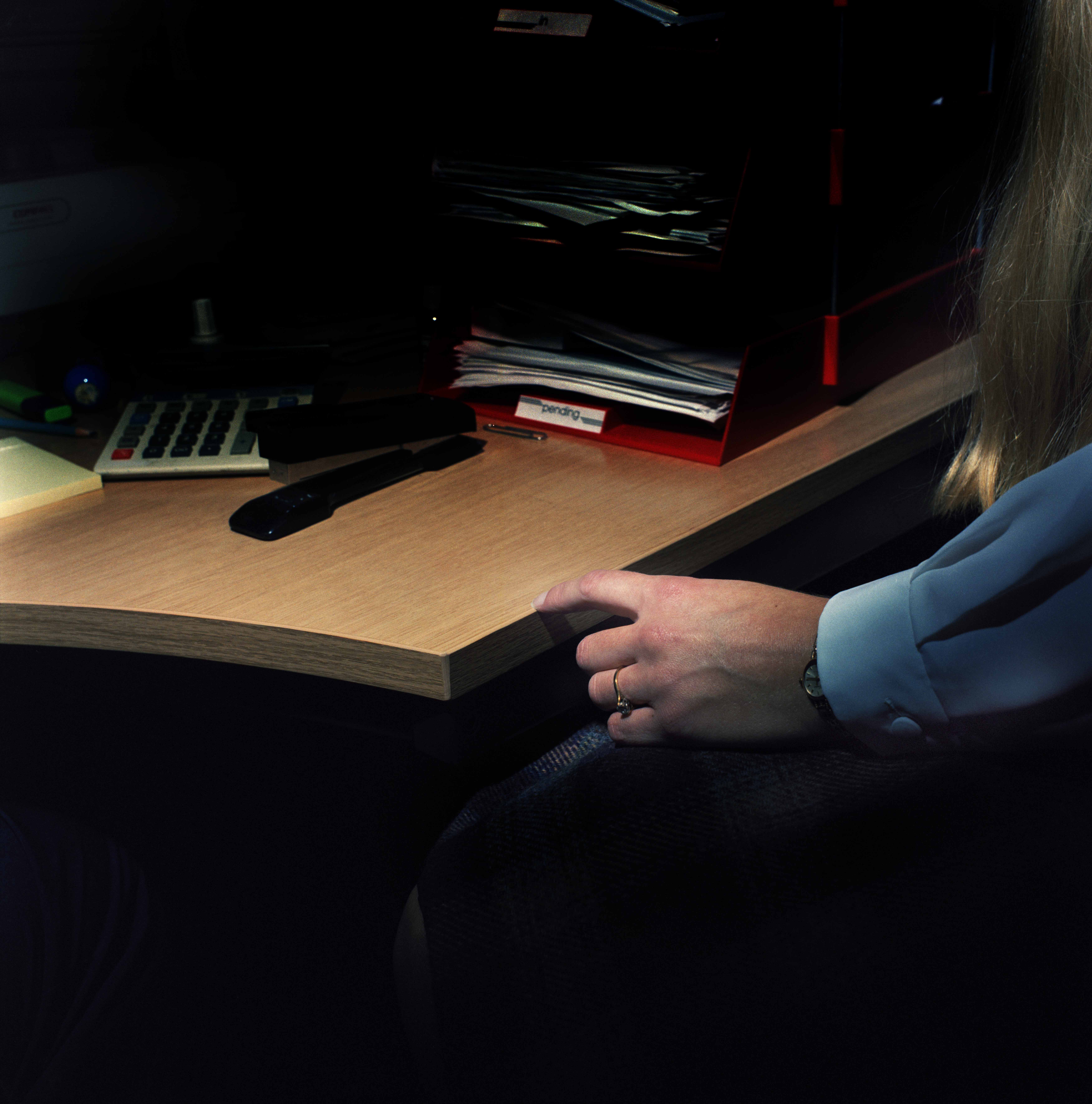
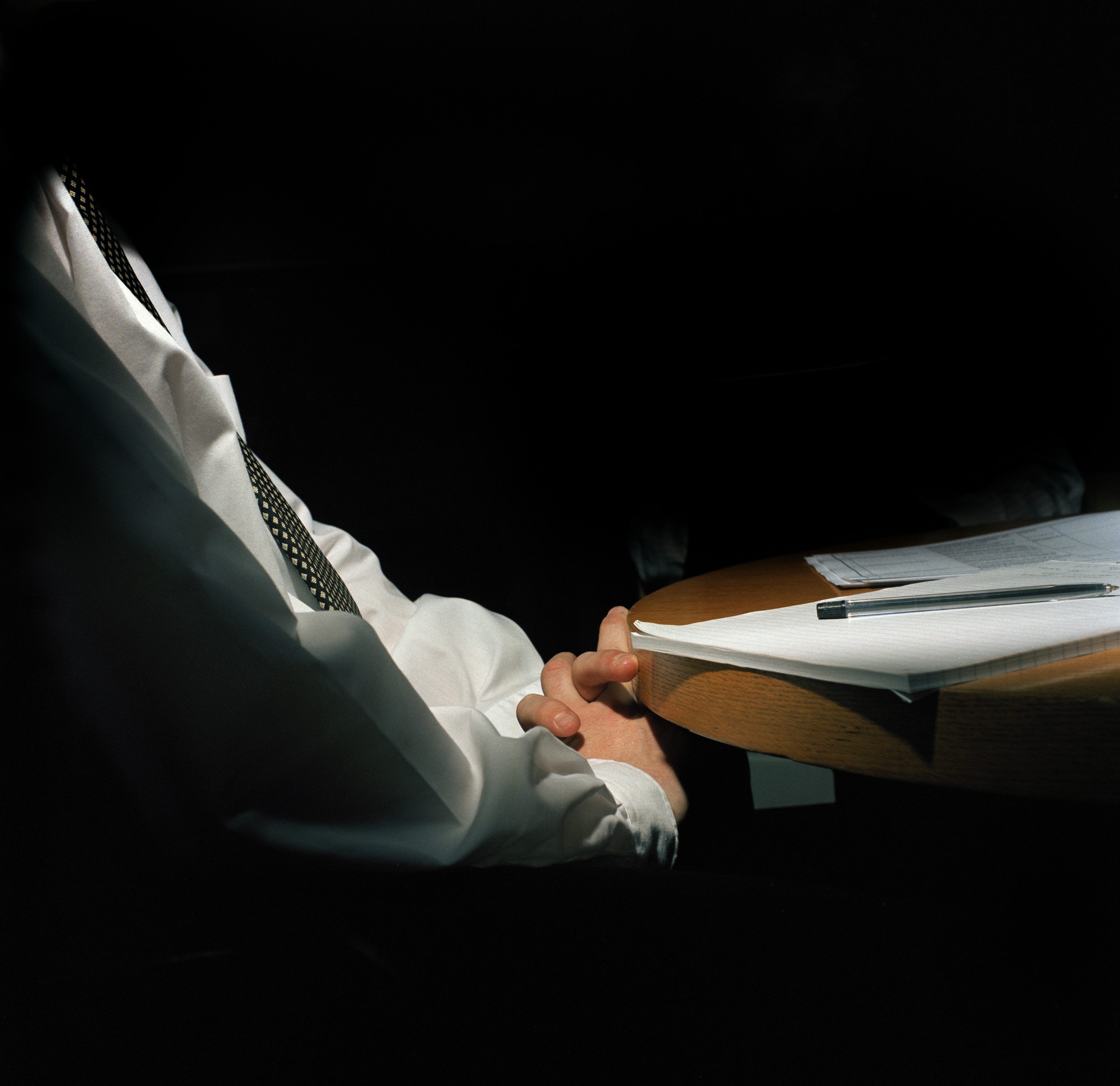
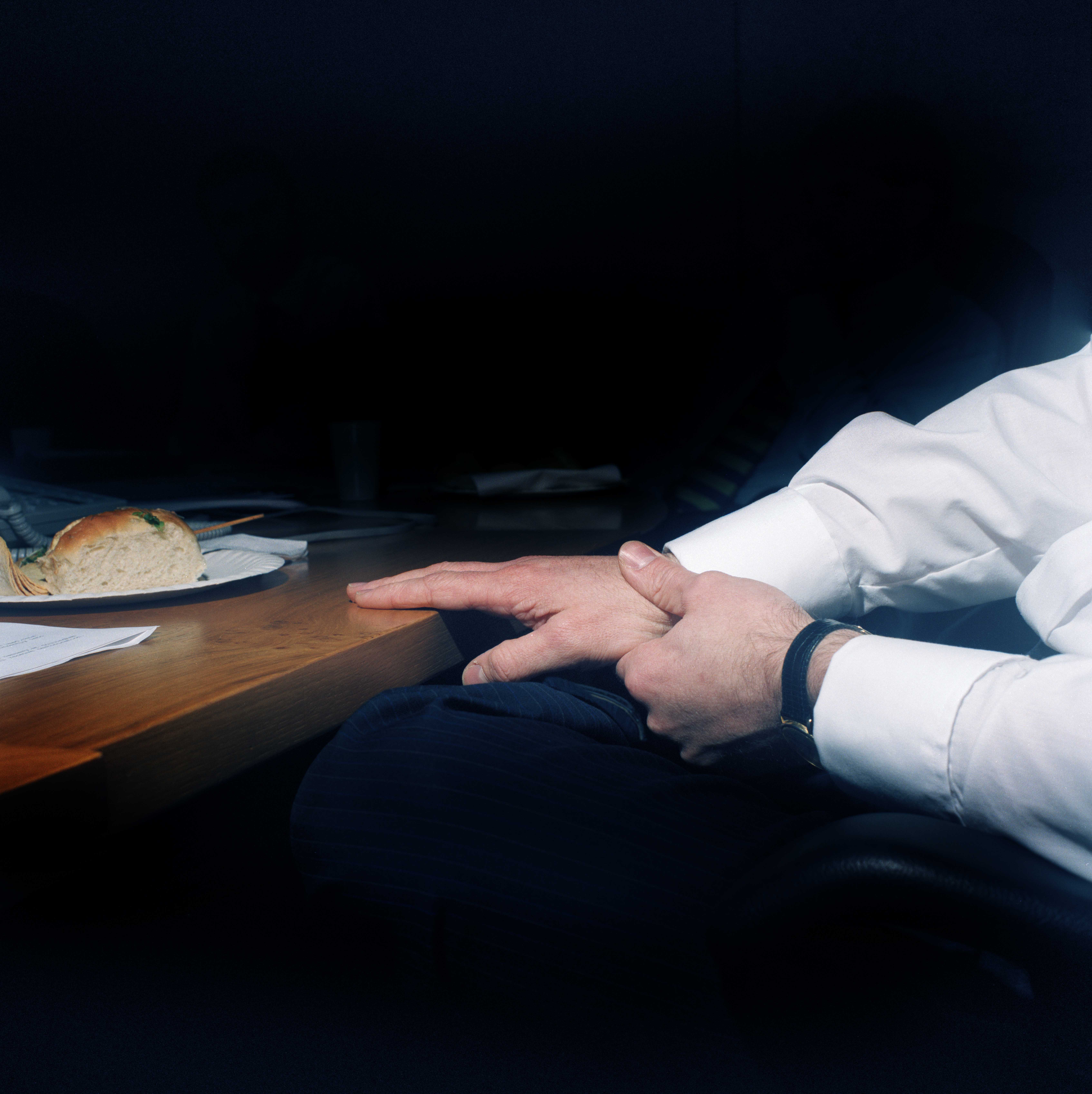
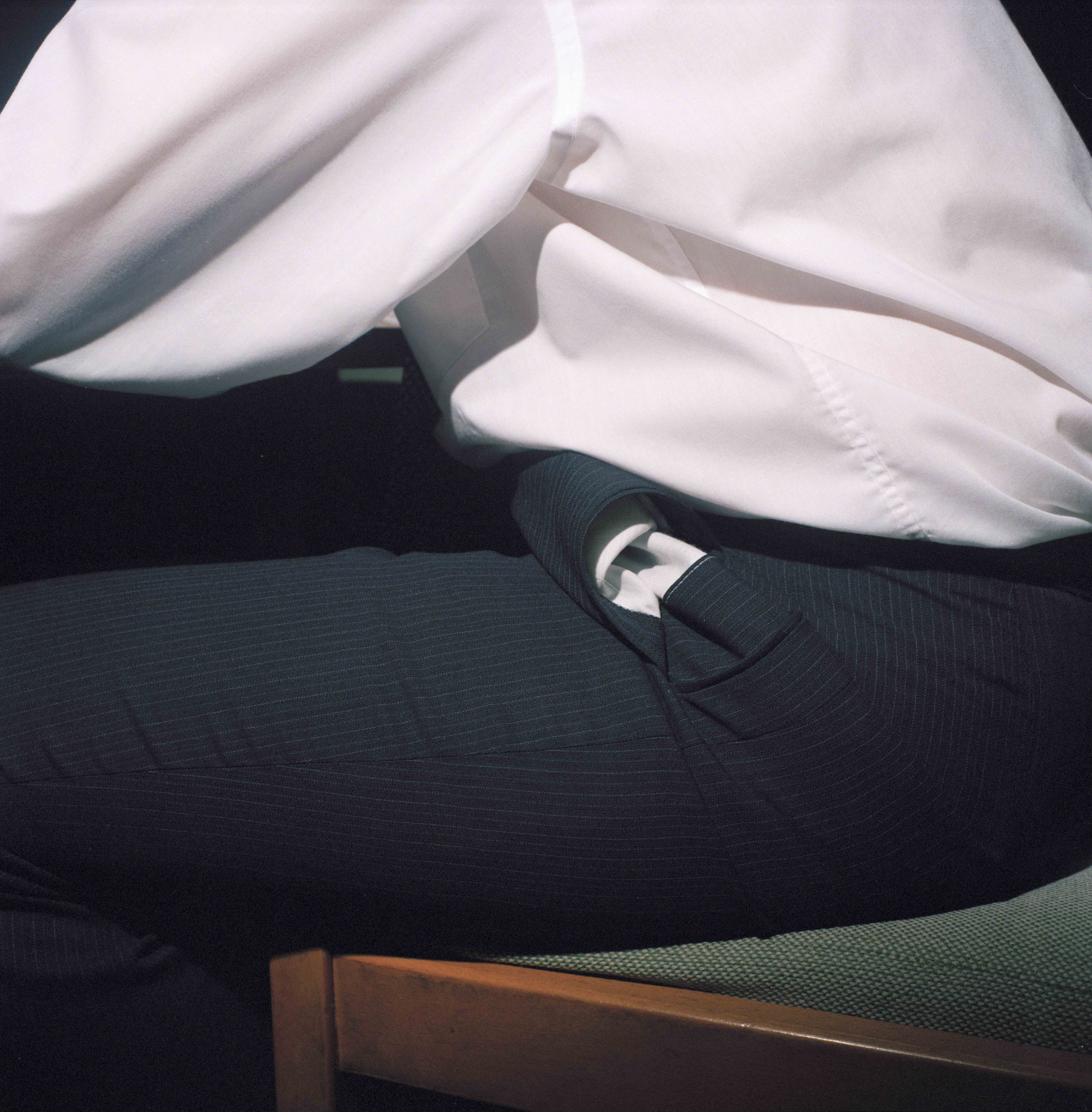
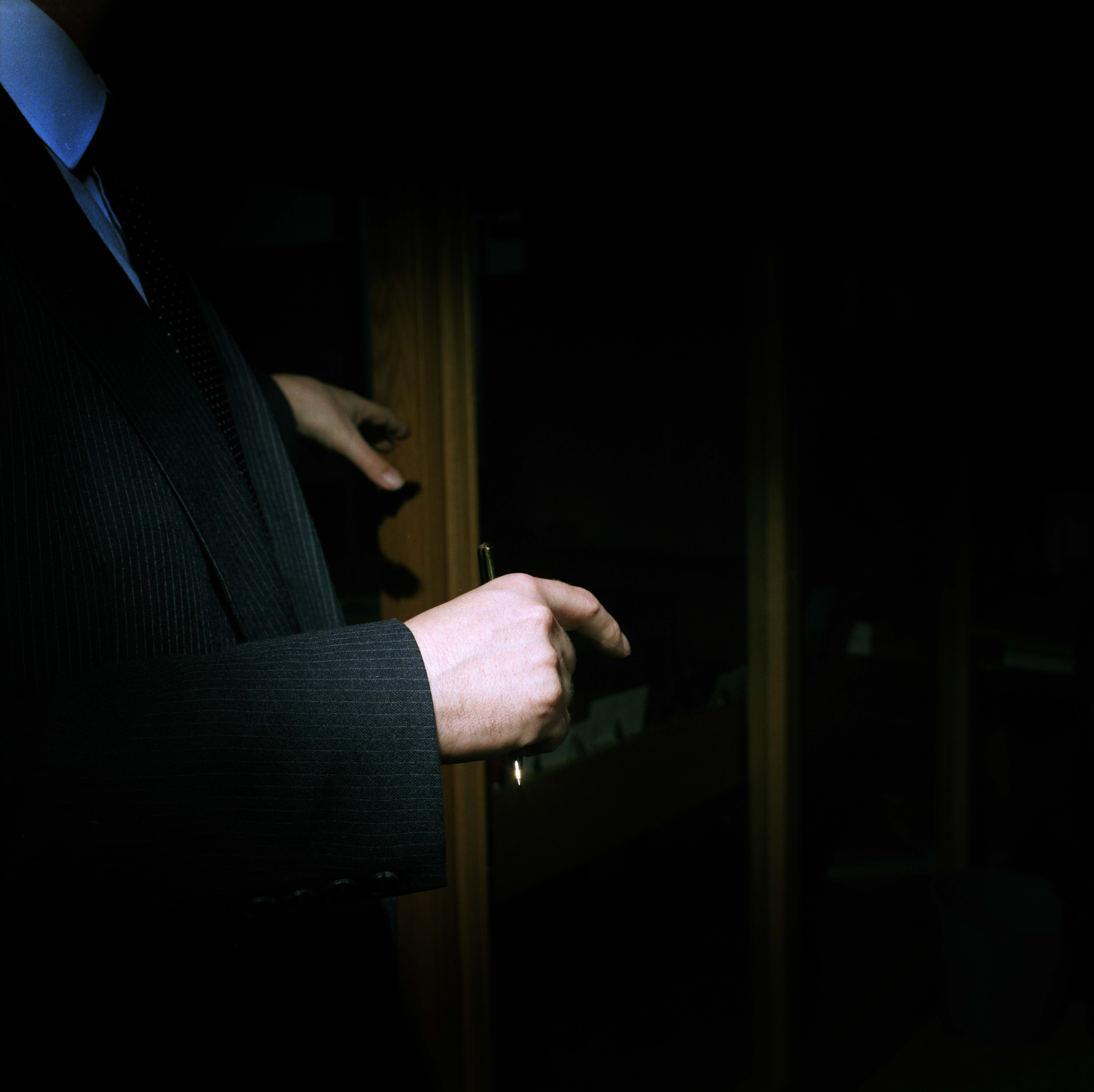


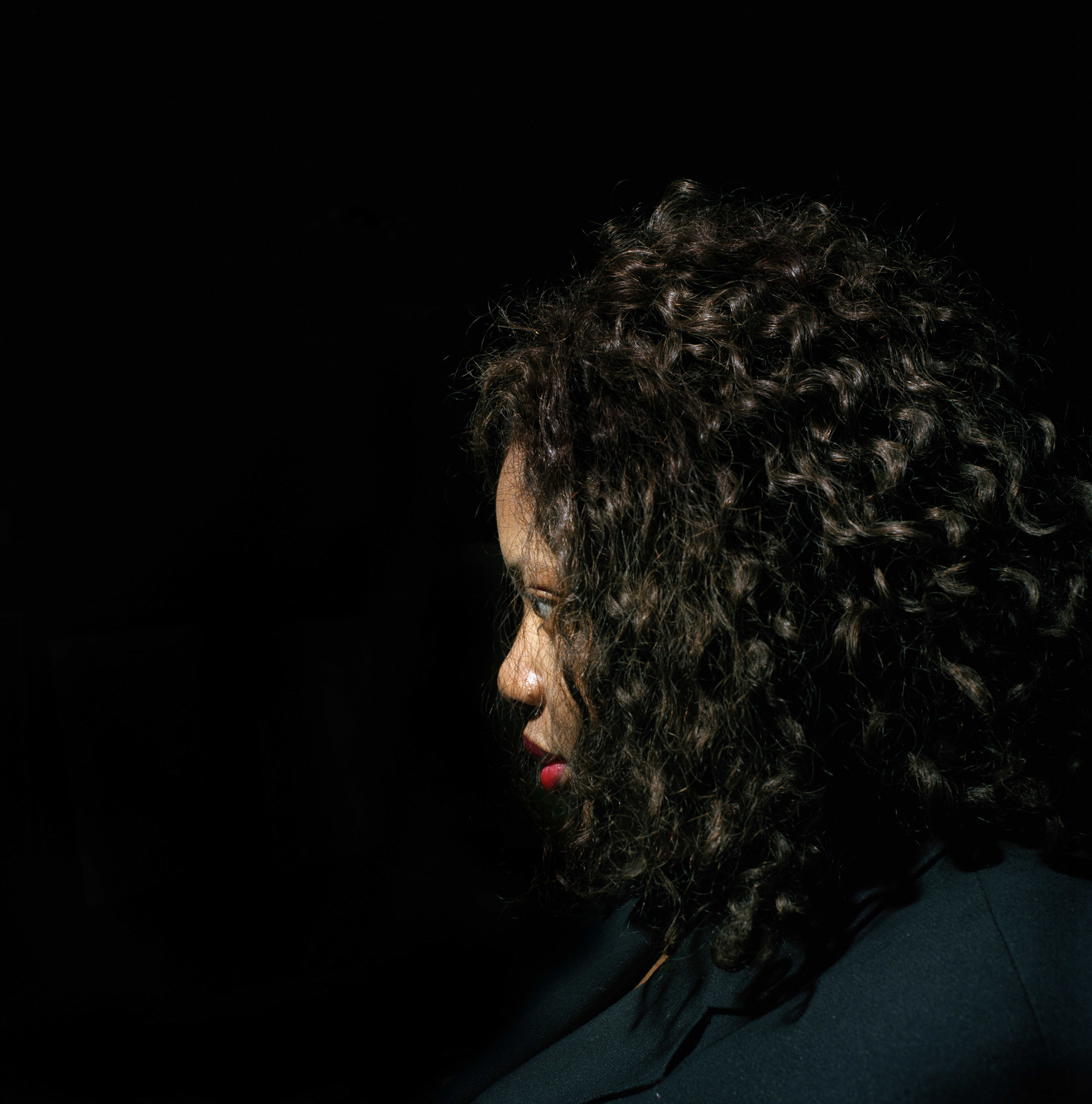


Work [1996-1999]
Between 1996 and 1999, initiated by an invitation from The Photographers’ Gallery, London, I began working on a series of photographs of late C20th work culture. Some of the early photographs I made were published in ‘Photo-Docklands’ and exhibited on the eve of the 1997 General Election with cocktails and fancy hors devours. Then a later commission to make the book ‘Seen and Magnified’ [ alongside the photographer Peter Cattrell] in 1999. The work continued for a while, showing in ‘Office’ a group show at The Photographers’ Gallery in 2003/4 and more recently acquired, published and exhibited for ‘Facing Britain’ a touring exhibition.
Between 1996 and 1999, initiated by an invitation from The Photographers’ Gallery, London, I began working on a series of photographs of late C20th work culture. Some of the early photographs I made were published in ‘Photo-Docklands’ and exhibited on the eve of the 1997 General Election with cocktails and fancy hors devours. Then a later commission to make the book ‘Seen and Magnified’ [ alongside the photographer Peter Cattrell] in 1999. The work continued for a while, showing in ‘Office’ a group show at The Photographers’ Gallery in 2003/4 and more recently acquired, published and exhibited for ‘Facing Britain’ a touring exhibition.
David Moore: The Space of Flows
by David Chandler
Because in one way or another it touches all of us, the ‘white collar’ workplace is one of the most powerfully symbolic environments of our uncertain and transitional turn of the century culture. In offices everywhere over the last ten years the promise of new technology as a tool of empowerment has been answered instead by new pressures and anxieties as patterns and structures of work have changed to create more efficient, streamlined systems and to maximise the potential for higher productivity. In parallel to this, global communications have helped to create a new perception of time itself. The ‘instant’, as both an idea and as a measure of time, has taken on a special currency: instant information, instant access, instant solutions, permeate the workplace and the ‘micro management of time’ is accepted alongside notions of obsolescence and disposability. Now, it seems, there are no limits, no boundaries, but also no guarantees, to the working contract. As working life becomes more flexible so instability and impermanence at work have begun to shape the contours of new forms of human experience.
This is the uneasy space that David Moore probes darkly in his new series of photographs; a space of physical and psychological suspension, where the vital signs of human life seem to be in danger of being erased. In formal terms the work follows Moore’s earlier series, The Velvet Arena, with its intense concentration of human figures compressed into a shallow foreground carved out by the photographer’s flashlight. And yet the differences are also significant. In the earlier work the body was more animated and gestural, the images tracking the taut physical communication between guests at private receptions and parties. In the new photographs the body is more isolated and stilled against the black void beyond the flash. In each a figure seems lost in concentration, their attention fixed on something outside of the frame, something hypnotic that from experience and the vacant expression, we might judge to be a computer screen. Both present and absent, emerging from and fading into the dark recesses of the unseen office, they are poised in an ambiguous state that feels, the longer we look, quietly sinister.
Detached in this way from the coarser texture of real events and real space the effect of the photographs is overtly theatrical. But rather than create a stage setting, Moore transforms the office into a kind of operating theatre. The body is prepared for our scrutiny by a coruscating light and we adopt an almost surgical or forensic gaze as the figures themselves stare out across the picture space. Under these conditions skin take on a translucent quality, absorbing and reflecting light it has a wax like sheen. Even those figures, which Moore has invested with a wide -eyed, cartoon like presence, seem to have absorbed a negative charge. Breathing its air-conditioned, recycled oxygen, deadened and rained by electronic emissions, the body here is rendered corpse-like against the cold dark slab of office infinity.
Even as it occupies centre stage in our lives, a space into which so many of our energies and aspirations are directed, David Moore’s work reveals the office as the dead-zone of the contemporary human soul, luring us into a wandering compliance and submission.
© David Chandler 2011
by David Chandler
Because in one way or another it touches all of us, the ‘white collar’ workplace is one of the most powerfully symbolic environments of our uncertain and transitional turn of the century culture. In offices everywhere over the last ten years the promise of new technology as a tool of empowerment has been answered instead by new pressures and anxieties as patterns and structures of work have changed to create more efficient, streamlined systems and to maximise the potential for higher productivity. In parallel to this, global communications have helped to create a new perception of time itself. The ‘instant’, as both an idea and as a measure of time, has taken on a special currency: instant information, instant access, instant solutions, permeate the workplace and the ‘micro management of time’ is accepted alongside notions of obsolescence and disposability. Now, it seems, there are no limits, no boundaries, but also no guarantees, to the working contract. As working life becomes more flexible so instability and impermanence at work have begun to shape the contours of new forms of human experience.
This is the uneasy space that David Moore probes darkly in his new series of photographs; a space of physical and psychological suspension, where the vital signs of human life seem to be in danger of being erased. In formal terms the work follows Moore’s earlier series, The Velvet Arena, with its intense concentration of human figures compressed into a shallow foreground carved out by the photographer’s flashlight. And yet the differences are also significant. In the earlier work the body was more animated and gestural, the images tracking the taut physical communication between guests at private receptions and parties. In the new photographs the body is more isolated and stilled against the black void beyond the flash. In each a figure seems lost in concentration, their attention fixed on something outside of the frame, something hypnotic that from experience and the vacant expression, we might judge to be a computer screen. Both present and absent, emerging from and fading into the dark recesses of the unseen office, they are poised in an ambiguous state that feels, the longer we look, quietly sinister.
Detached in this way from the coarser texture of real events and real space the effect of the photographs is overtly theatrical. But rather than create a stage setting, Moore transforms the office into a kind of operating theatre. The body is prepared for our scrutiny by a coruscating light and we adopt an almost surgical or forensic gaze as the figures themselves stare out across the picture space. Under these conditions skin take on a translucent quality, absorbing and reflecting light it has a wax like sheen. Even those figures, which Moore has invested with a wide -eyed, cartoon like presence, seem to have absorbed a negative charge. Breathing its air-conditioned, recycled oxygen, deadened and rained by electronic emissions, the body here is rendered corpse-like against the cold dark slab of office infinity.
Even as it occupies centre stage in our lives, a space into which so many of our energies and aspirations are directed, David Moore’s work reveals the office as the dead-zone of the contemporary human soul, luring us into a wandering compliance and submission.
© David Chandler 2011